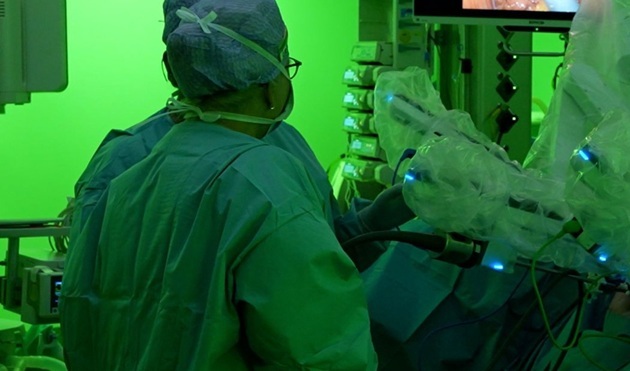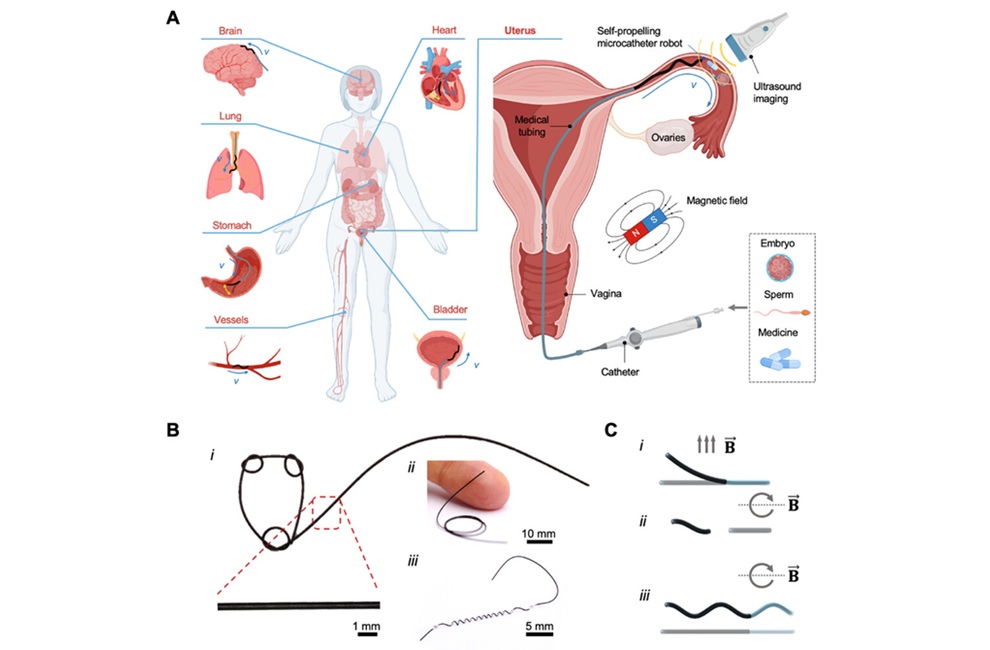Fewer Pathologists and More Cancer Patients Drive Pathology Market
|
By HospiMedica International staff writers Posted on 02 Jan 2018 |
The global digital pathology market was worth USD 381.8 million in 2016 and is projected to grow at a CAGR of 13.2% to reach USD 708.9 million by 2021, driven by the increased adoption of digital pathology solutions worldwide due to shortage of pathologists and rise in new cancer cases. Additionally, new business models and increased FDA approvals of Whole Slide Image (WSI) scanners for primary diagnostics are expected to provide a boost to the digital pathology market.
These are the findings of Frost & Sullivan, a consulting and research firm (Santa Clara, CA, USA).
The declining number of pathologists and increase in procedural volumes due to a rise in the number of oncology cases is expected to be a key growth driver of the digital pathology market. The World Health Organization (WHO) estimates a rise of about 70% in the number of new cases over the next two decades. Digital pathology is known to enhance the productivity of pathologists by 10% to 15%, leading to an improvement in the overall efficiency of healthcare providers. Digital pathology solutions are well suited for oncology care and are useful in cancer diagnosis, as these systems allow physicians to quickly take and consider a second opinion in critical cases. Additionally, the use of digital pathology in drug discovery allows pharmaceutical companies to remove bias and provide quantifiable results.
The growing applications of digital pathology in drug development activities, increasing awareness, and FDA approval for the use of digital pathology systems in clinical applications are expected to further fuel the growth of the digital pathology market. Digital pathology devices were not approved for primary diagnosis until Philips received approval for Intellisite in April 2017, which is likely to drive higher adoption of digital pathology in primary diagnosis. Further approvals of WSIs anticipated over the next 3 to 5 years will lead to increased competition in the digital pathology market.
The share of the software segment in the digital pathology market is estimated to increase on account of an expected increase in spending on image processing and analysis software products. Moreover, increased focus on using machine learning tools and Artificial Intelligence- (AI) based algorithm for automated predictive healthcare solutions will provide a boost to the spending on software solutions.
Since machine learning and AI-based platforms enable useful clinical interpretation of whole slide images, companies are strongly focusing on developing new algorithms and updating their existing ones. Multi-spectral imaging in whole slide scanning also provides a significant growth opportunity as the capabilities to handle multiple staining using multi-spectral imaging systems allow pathologists to more accurately probe the tissue biomarkers. Hence, multi-spectral imaging in whole slide scanning holds significant growth potential due to its high adoption in the clinical segment.
In spite of the higher efficiency and clinical effectiveness of digital pathology solutions, their high cost remains one of the key restraints to market growth, especially among small-to-mid-sized laboratories. However, new business models and partnerships among vendors are expected to change this scenario in the future.
“Strategic partnerships will be essential to pushing market growth. Vendors who provide one or two components for the entire digital pathology portfolio will need to identify the right partner to devise a more robust and complete offering,” said Divyaa Ravishankar, Senior Research Analyst at Frost & Sullivan. “Additionally, vendors should also be able to provide the laboratories with a portfolio of business models.”
Related Links:
Frost & Sullivan
These are the findings of Frost & Sullivan, a consulting and research firm (Santa Clara, CA, USA).
The declining number of pathologists and increase in procedural volumes due to a rise in the number of oncology cases is expected to be a key growth driver of the digital pathology market. The World Health Organization (WHO) estimates a rise of about 70% in the number of new cases over the next two decades. Digital pathology is known to enhance the productivity of pathologists by 10% to 15%, leading to an improvement in the overall efficiency of healthcare providers. Digital pathology solutions are well suited for oncology care and are useful in cancer diagnosis, as these systems allow physicians to quickly take and consider a second opinion in critical cases. Additionally, the use of digital pathology in drug discovery allows pharmaceutical companies to remove bias and provide quantifiable results.
The growing applications of digital pathology in drug development activities, increasing awareness, and FDA approval for the use of digital pathology systems in clinical applications are expected to further fuel the growth of the digital pathology market. Digital pathology devices were not approved for primary diagnosis until Philips received approval for Intellisite in April 2017, which is likely to drive higher adoption of digital pathology in primary diagnosis. Further approvals of WSIs anticipated over the next 3 to 5 years will lead to increased competition in the digital pathology market.
The share of the software segment in the digital pathology market is estimated to increase on account of an expected increase in spending on image processing and analysis software products. Moreover, increased focus on using machine learning tools and Artificial Intelligence- (AI) based algorithm for automated predictive healthcare solutions will provide a boost to the spending on software solutions.
Since machine learning and AI-based platforms enable useful clinical interpretation of whole slide images, companies are strongly focusing on developing new algorithms and updating their existing ones. Multi-spectral imaging in whole slide scanning also provides a significant growth opportunity as the capabilities to handle multiple staining using multi-spectral imaging systems allow pathologists to more accurately probe the tissue biomarkers. Hence, multi-spectral imaging in whole slide scanning holds significant growth potential due to its high adoption in the clinical segment.
In spite of the higher efficiency and clinical effectiveness of digital pathology solutions, their high cost remains one of the key restraints to market growth, especially among small-to-mid-sized laboratories. However, new business models and partnerships among vendors are expected to change this scenario in the future.
“Strategic partnerships will be essential to pushing market growth. Vendors who provide one or two components for the entire digital pathology portfolio will need to identify the right partner to devise a more robust and complete offering,” said Divyaa Ravishankar, Senior Research Analyst at Frost & Sullivan. “Additionally, vendors should also be able to provide the laboratories with a portfolio of business models.”
Related Links:
Frost & Sullivan
Channels
Critical Care
view channel
Precision Approach Improves Immunotherapy Effectiveness for ICU Patients with Sepsis
Sepsis occurs when the immune system responds abnormally to an infection, often triggering life-threatening organ failure. Despite affecting around 49 million people globally each year and causing approximately... Read more
Soft Robots Could Donate Their Heart to Humans
Heart failure is a growing global health burden, and existing artificial hearts and mechanical pumps often fall short of long-term clinical needs. Many current devices rely on rigid components and complex... Read moreSurgical Techniques
view channel
Minimally Invasive Surgery Proven Safe and Effective for Complex ‘Whipple’ Procedure
Tumors of the pancreatic head often require a highly complex operation known as pancreatoduodenectomy or the Whipple procedure. This surgery involves removing multiple structures and creating several internal... Read more
Catheter-Based Procedures Offer Less Invasive Option for Treatment of Valvular Disease
Valvular heart disease, caused by tight or leaky valves between heart chambers, affects up to 10% of older adults and leads to more than 120,000 deaths globally each year. Traditional open-heart surgery... Read morePatient Care
view channel
Revolutionary Automatic IV-Line Flushing Device to Enhance Infusion Care
More than 80% of in-hospital patients receive intravenous (IV) therapy. Every dose of IV medicine delivered in a small volume (<250 mL) infusion bag should be followed by subsequent flushing to ensure... Read more
VR Training Tool Combats Contamination of Portable Medical Equipment
Healthcare-associated infections (HAIs) impact one in every 31 patients, cause nearly 100,000 deaths each year, and cost USD 28.4 billion in direct medical expenses. Notably, up to 75% of these infections... Read more
Portable Biosensor Platform to Reduce Hospital-Acquired Infections
Approximately 4 million patients in the European Union acquire healthcare-associated infections (HAIs) or nosocomial infections each year, with around 37,000 deaths directly resulting from these infections,... Read moreFirst-Of-Its-Kind Portable Germicidal Light Technology Disinfects High-Touch Clinical Surfaces in Seconds
Reducing healthcare-acquired infections (HAIs) remains a pressing issue within global healthcare systems. In the United States alone, 1.7 million patients contract HAIs annually, leading to approximately... Read moreHealth IT
view channel
EMR-Based Tool Predicts Graft Failure After Kidney Transplant
Kidney transplantation offers patients with end-stage kidney disease longer survival and better quality of life than dialysis, yet graft failure remains a major challenge. Although a successful transplant... Read more
Printable Molecule-Selective Nanoparticles Enable Mass Production of Wearable Biosensors
The future of medicine is likely to focus on the personalization of healthcare—understanding exactly what an individual requires and delivering the appropriate combination of nutrients, metabolites, and... Read moreBusiness
view channel
Philips and Masimo Partner to Advance Patient Monitoring Measurement Technologies
Royal Philips (Amsterdam, Netherlands) and Masimo (Irvine, California, USA) have renewed their multi-year strategic collaboration, combining Philips’ expertise in patient monitoring with Masimo’s noninvasive... Read more
B. Braun Acquires Digital Microsurgery Company True Digital Surgery
The high-end microsurgery market in neurosurgery, spine, and ENT is undergoing a significant transformation. Traditional analog microscopes are giving way to digital exoscopes, which provide improved visualization,... Read more
CMEF 2025 to Promote Holistic and High-Quality Development of Medical and Health Industry
The 92nd China International Medical Equipment Fair (CMEF 2025) Autumn Exhibition is scheduled to be held from September 26 to 29 at the China Import and Export Fair Complex (Canton Fair Complex) in Guangzhou.... Read more















